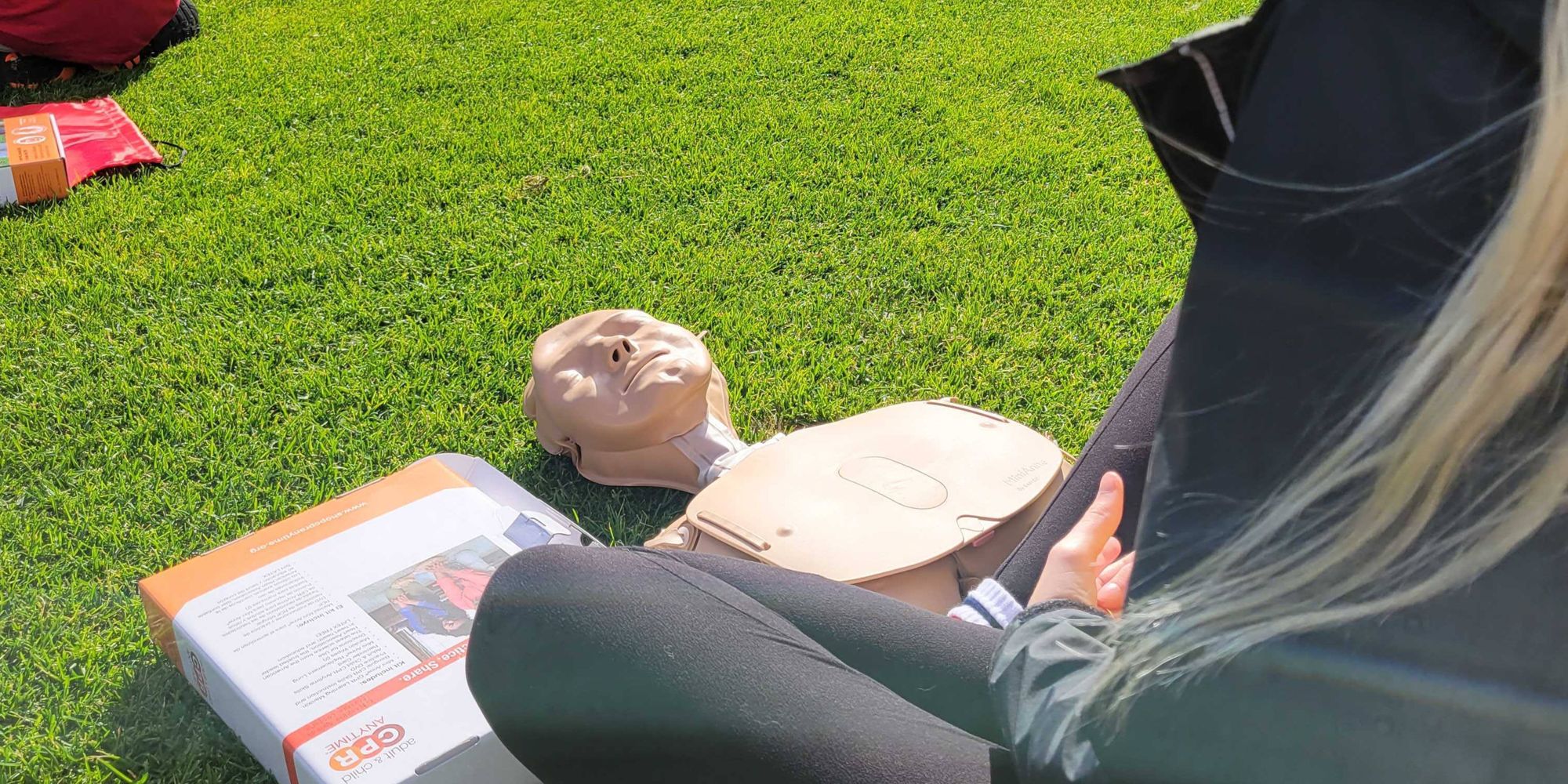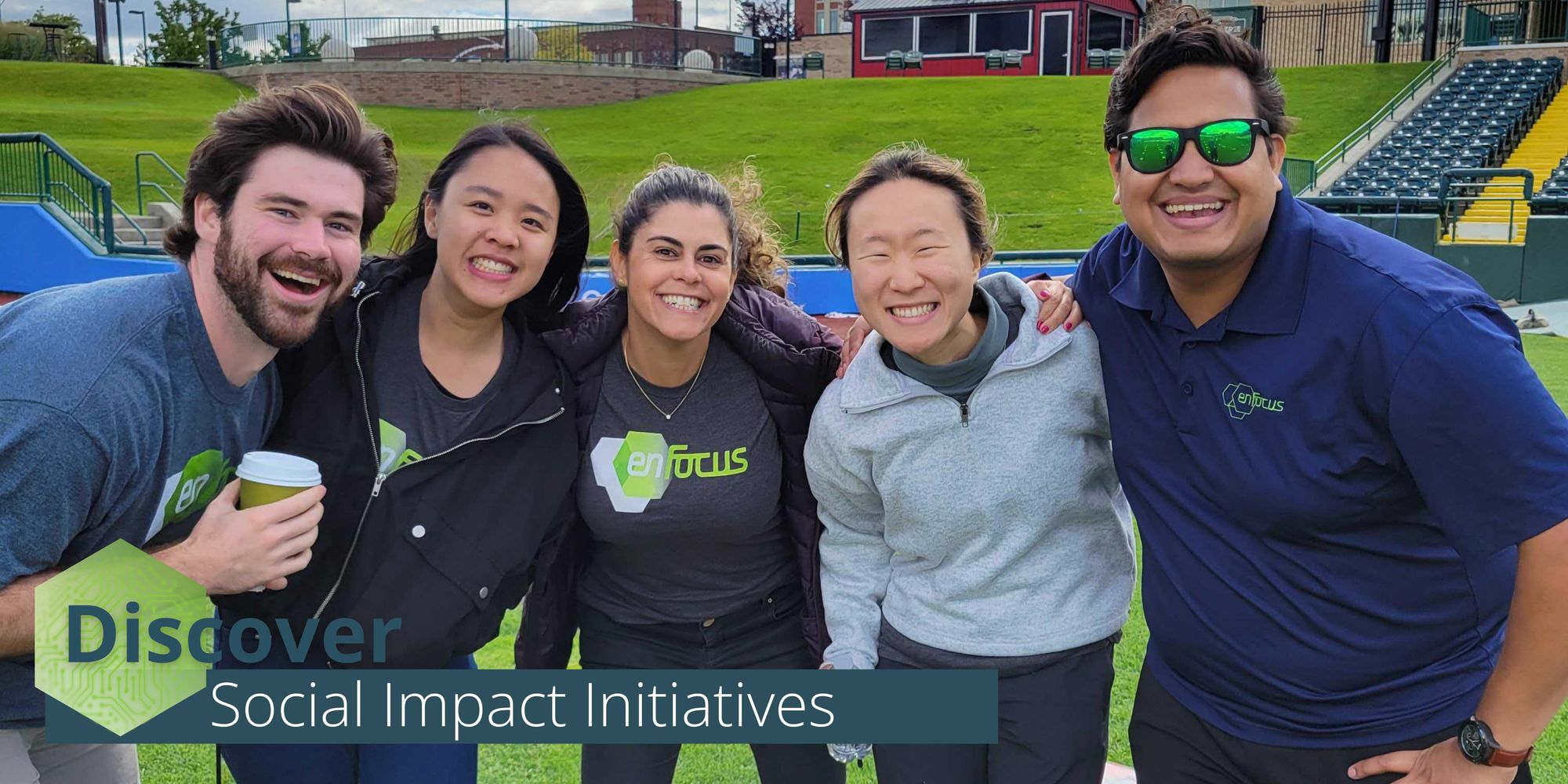Innovation ecosystems need to incubate new products, services, and startups to spark regional economic growth. As communities fully commit to transforming their innovation ecosystems, up-and-coming social initiatives are equally important for community progress.
At enFocus, research and development transcends products and services. It also includes visionary social initiatives that are inspired by community needs. As ideas come to fruition, these programs often find a life of their own for the greater good of the communities they serve.
One such social initiative is the Save a Life program. Through the enFocus model, Fellows discover community concerns, design solutions, implement programming, and impact the lives of others. The process for Save a Life is an example of an enFocus project that encourages young people to invest in their communities, and motivates others to do the same.
Discover: Finding a community need
Nationally, there are 326,000 sudden cardiac arrest events each year in the U.S., and for 9 out of 10 victims, the experience is fatal. Sudden cardiac arrest is the leading cause of death among adults over 40, and disproportionately affects communities of color, athletes, and student athletes.
Although many of us understand the severity of sudden cardiac arrest, some may not realize that only 10.9% of cases take place in the hospital compared to the 72.3% of cases that happen in the home. The knowledge and skill to perform CPR in the home can increase survival rates of the people we know and love.
In 2015, multiple local health systems discovered there were significantly low out-of-hospital sudden cardiac arrest survival rates in St. Joseph County. Health officials believed a lack of community awareness and low bystander intervention rates were key contributors to the problem.
Dr. William Sarnat, a retired cardiologist, sought to change the narrative and approached enFocus to ideate a solution. Together, an out-of-hospital-cardiac-arrest (OHCA) task force was formed and led to the creation of Save the Life.
Design: Creating a sustainable action plan
The Save a Life event was created to teach young people about the importance of CPR, and how to act in case of an emergency. Eighth grade students were chosen to train because of their physical abilities, their willingness to learn, and their enthusiasm to teach others.
Partnerships with local school systems, health care providers, and a variety of other sponsors were formed, and came together to host a mass CPR event at Four Winds Stadium. The stadium still serves as a venue where hundreds of students can be trained at the same time and CPR kits can be efficiently distributed.
The CPR kits are crucial to the success of Save a Life. Each student who attends the CPR mass training takes home a manikin so they can practice the skill themselves, or teach family members.
Alexia Velazquez, a second year Fellow, says that finding funds to give manikins to students can be a challenge. She says that securing Sponsors and support are integral to perpetuation of CPR training. Alexia shares, “We are able to use our connections to seek out new sponsors that are willing to contribute financially.” Sponsor contributions keep the Save a Life program going, and provide students the autonomy to teach others who can utilize CPR skills.

Year after year, Fellows conquer a variety of challenges and the program only grows stronger. Gathering stakeholders, collaborating with school officials, arranging transportation for students, scheduling departure times, and ensuring there are enough volunteers to assist the students in effectively learning CPR are all a part of successfully designing a program that can be easily implemented and delegated for years to come.
Implement: Watching the event come to life
After months of preparation, the Save a Life event arrives! Community members, schools, and volunteers come together to help young people learn the importance of CPR.
In the morning, volunteers distribute hundreds of bags and CPR kits while eighth graders from several schools make their way to the stadium. They watch videos on the Jumbotron and learn CPR best practices, then inflate their practice manikin, and get to try it for themselves. After the kits are packed away and the students hear testimonials of guest speakers and survivors, they head back to school. Then, volunteers prepare for a second wave of students to do it all again in the afternoon.
Marty Kennedy, current enFocus Fellow, elaborates on the importance of the collaborative efforts of the community saying, “The CPR Mass Training Event could not be put on without the generous help from many community partners. We are so appreciative of how our community has continued to help organize and implement this event.”
Save a Life is only possible through the hard work of Fellow research, facilitation of community relationships, and the advancement of community health in Saint Joseph County.
Impact: Empowering talent in our community
Since its inception, they have trained 5,600 students. In 2023 alone, 15 public and private schools attended, and 1,700 kits were distributed. For every student who learns CPR at Save a Life, they are estimated to train 2.85 additional people they know, creating an estimate of 15,960 residents in Saint Joseph County who are taught CPR.
There is hope that one day, Save a Life will be its own organization, and for the Saint Joseph County initiative to become a solution model for a problem that many communities face across the nation. As an organization, we will continue to support social impact projects like Save a Life because they directly reinforce the advancement of entrepreneurial, economic, and social development.
At enFocus, our mission is to empower talent to build stronger communities. Save a Life is a program for our Fellows to grow and develop their skills, but more importantly, it is an event that celebrates the capabilities of young people who will continue to make a real difference in their homes and schools.
